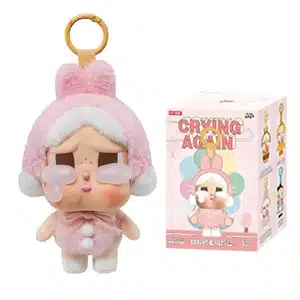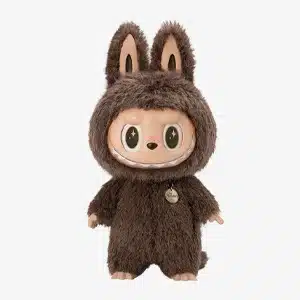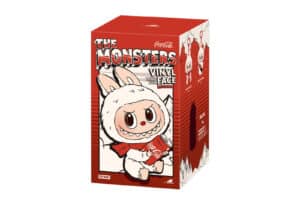From its humble beginnings in urban culture to its widespread global impact, we’ll trace the intricate threads that have woven this fashion phenomenon into the fabric of contemporary style, shedding light on the diverse influences that have shaped its dynamic trajectory.
The Evolution of Streetwear
- Definition of Streetwear
- Types and styles of streetwear
- Popularity and appeal of streetwear
- Influences and Origins of Streetwear
- Streetwear Consumers and Demographics
- Streetwear Brands and Fashion Labels
- Cultural Aspects and Japan’s Influence
- Understanding Streetwear Industry
Definition of Streetwear
We’ve all heard the term ‘Streetwear’, but what does it truly mean? Just like all fashion, streetwear does not have one exact definition and perception but rather is interpreted differently by individuals.
Streetwear is often seen as a blend of pop-culture influences, such as 90’s fashion, hip-hop music, and sports/athleisure creating a distinctive style. Ultimately streetwear consists of oversized, baggy clothes that give a relaxed look but also incorporate different bold graphic designs, tapping into the 90’s fashion vibe and hip-hop culture. Sports are incorporated into streetwear mainly through shoes such as Nike Air Jordan and Nike Dunk. These shoes have taken over the streetwear scene and have become a staple for many streetwear enthusiasts.
Types and styles of streetwear
The style of streetwear is a blend of various sub-genres, including hip-hop fashion, skatewear, high-end fashion, and athleisure. These diverse elements can be fused to create unique looks that still fall under the broad umbrella of streetwear. Streetwear stands out as a distinctive fashion genre that marries pop culture influences with the ease of comfort. Hence, despite their distinct aesthetics, both athleisure and hip-hop fashion are integral components of the streetwear phenomenon.
One of the most recognizable facets of streetwear is its close ties to sneaker culture. This association with trendy footwear is deeply embedded in the streetwear scene, largely due to the significant influence of pop culture and celebrity styles which many strive to emulate.
Another defining characteristic of streetwear is its embrace of oversized clothing. From baggy pants that nod to the fashion trends of the ’90s, to oversized hoodies and jackets, these elements lay the groundwork for the streetwear aesthetic.
Although rooted in casual attire, streetwear elevates the everyday look to a higher plane. It showcases the influence of pop culture, sports, and high fashion, yet does so in a way that remains accessible and wearable for all. In essence, streetwear is more than just a fashion statement; it’s a cultural expression that transcends traditional style boundaries.
Popularity and appeal of streetwear
Streetwear’s unique blend of accessibility and cultural relevance has emerged as one of the most popular styles globally. Rooted in sports and music, the style embodies the essence of pop culture, continually evolving to mirror current trends while staying true to its origins.
The inception of streetwear can be traced back to the subcultures of skateboarding, surfing, hip-hop, and graffiti art, resulting in an eclectic mix that is both distinctive and dynamic. This mix-and-match style, coupled with a broad spectrum of colours and brands, enables personal expression, making every outfit a distinct representation of the wearer’s personality.
The popularity of streetwear has been significantly amplified by renowned brands like Supreme and Yeezy, which release limited quantities of their products, creating a sense of exclusivity and desirability. This strategic approach enhances the perceived value of each piece, providing a sense of rarity that further fuels its appeal.
Streetwear’s relationship with social media has also played an integral role in its rise, creating a communication loop between consumer and brand. The younger generations, who make up the majority of its followers, are drawn to this style for its fashion-forward, casual aesthetic that allows for self-expression. They often perceive themselves as socially conscious, a trend that is spreading to all consumers.
Japan has emerged as a notable hub for streetwear, with influential brands such as UNDERCOVER, NEIGHBORHOOD, and BAPE shaping the local and international fashion landscape. Japanese culture promotes self-expression through clothing, and its cutting-edge designs set the country apart as a style leader. Similarly, China’s fashion scene has been flooded with streetwear as consumers shift away from traditional luxury brands towards more contemporary styles. Brands such as OFF-WHITE, YEEZY, and Supreme have gained significant popularity, and local brands like Clot are gaining recognition both domestically and internationally.
Incorporating elements of New York City’s hip-hop culture in the mid-1980s, streetwear evolved into a global phenomenon by the 1990s, influenced by various subcultures, including punk, grunge, and Japanese street style. The 2000s and 2010s saw a massive rise in popularity, with brands like Supreme, BAPE, and Off-White becoming household names.
Today, streetwear continues to evolve and remain relevant, permeating high-fashion and luxury brands. Its influence on fashion is undeniable, serving as a testament to its enduring appeal and the power of self-expression.
Influences and Origins of Streetwear
The unique blend of accessibility and cultural relevance has risen to prominence as one of the most popular fashion styles around the globe. Drawing from diverse influences such as music and sports, streetwear encapsulates the pulse of pop culture. Continually evolving to mirror the latest trends, it retains its original spirit, born from a fusion of subcultures such as skateboarding, surfing, hip-hop, and graffiti art.
The term “Godfather of Streetwear” is attributed to different figures depending on the cultural context and source. Hiroshi Fujiwara, a Japanese musician, producer, and designer, often holds this title. With over 30 years in the industry, Fujiwara’s contributions have significantly shaped streetwear culture in Japan and beyond, nurturing many of today’s leading figures in Japanese fashion. However, in other contexts, the title may be bestowed upon American designer Karl Kani, whose eponymous fashion line gained popularity within the hip-hop community in the 1990s. Additionally, Nigo, the founder of the brand A Bathing Ape (BAPE), is sometimes referred to as the godfather of streetwear due to his considerable influence among musicians and designers.
One notable way streetwear has revolutionized fashion is by shifting the emphasis from the craftsmanship of garments to the identity of the brand. Brands like Supreme have made their mark not solely through their designs, but also via their branding and marketing strategies. The resonance of these brands with younger consumers has prompted high-fashion labels to engage with new audiences and cultivate brand identities that appeal to this demographic.
Originating in the United States in the 1990s, streetwear can trace its roots back to New York’s hip-hop fashion and California’s surf culture. Despite its American origins, streetwear quickly permeated other parts of the world, particularly Japan, leaving a significant impact on the fashion districts of Harajuku and Shibuya.
Streetwear Consumers and Demographics
Streetwear culture draws in individuals from various walks of life who are united by a shared appreciation for the style, culture, and values embodied by this unique fashion movement. At its core, streetwear resonates with young generations, particularly teenagers and young adults, who find its dynamic aesthetic an effective medium for self-expression and individuality.
These consumers are typically passionate about fashion, staying in tune with the latest trends and valuing the exclusive designs, limited-edition collaborations, and unique aesthetics offered by many streetwear brands. As a fashion trend deeply rooted in urban subcultures such as skateboarding, hip-hop, graffiti, and sneaker culture, streetwear naturally appeals to consumers who identify with these communities.
The rise of social media platforms like Instagram has undeniably played a significant role in propelling streetwear into mainstream fashion. Influencers and celebrities showcasing their streetwear outfits and collaborations serve as trendsetters, inspiring many consumers to keep up with the latest releases and fashion drops.
Brand consciousness is another defining characteristic of streetwear consumers. Iconic labels like Supreme, Off-White, BAPE, and Palace, as well as emerging brands that encapsulate the spirit of street culture, hold significant appeal for them. However, it’s not just about the brand name – these consumers also appreciate the comfort and functionality that streetwear clothing offers. From oversized hoodies, graphic T-shirts, and joggers, to sneakers and accessories, the emphasis is on maintaining style without compromising on comfort.
Inclusivity is an integral part of the streetwear movement. It challenges traditional gender norms and attracts consumers across the gender spectrum. Many streetwear brands now offer unisex or gender-neutral collections, further emphasizing individual expression.
While traditionally male-dominated, the streetwear scene is evolving. Initially, the industry catered primarily to men, and the roots of streetwear are often linked with male-dominated subcultures. However, there is a growing movement towards inclusivity and representation of women in streetwear. Women’s streetwear is gaining momentum, challenging the male-centric perception of the market. The industry is recognizing the importance of female consumers, initiating a shift towards a more diverse and inclusive future in streetwear.
In conclusion, the consumer base of streetwear is not confined to these characteristics. Streetwear has become a global phenomenon, attracting a diverse range of individuals with varied backgrounds, interests, and styles. From young adults aged 18-24 to people of all ages, and from men to an increasingly represented female demographic, streetwear truly is a fashion trend that
Streetwear Brands and Fashion Labels
Traditionally luxury brands, Louis Vuitton and Gucci have made significant strides in the streetwear scene by embracing strategic collaborations. The game-changing Louis Vuitton x Supreme collaboration bridged the gap between high fashion and streetwear, appealing to fans of both styles. Further cementing its place in the streetwear landscape, Louis Vuitton showcased streetwear-inspired designs in its Fall 2022 collection and partnered with Nigo, a streetwear industry figurehead, to produce a capsule collection featuring dedicated graphics and interpretations of the Louis Vuitton monogram. Gucci, not to be outdone, also incorporated streetwear trends through their collaboration with Palace, fusing high fashion with skateboarding aesthetics.
Sportswear giants Nike and Adidas have also made their way into the realm of streetwear. Both brands have embraced the aesthetic, incorporating it into their product lines to appeal to a younger, more fashion-forward audience. Nike has successfully impacted the streetwear market through collaborations with high-fashion brands like Balenciaga and Prada and its sub-brands like Jordan Brand and Nike SB. Similarly, Adidas, while rooted in sports, has leaned into a streetwear aesthetic, collaborating with designers like Kanye West for his Yeezy line and Pharrell Williams, alongside its Originals line that draws inspiration from street culture and retro styles.
Balenciaga, initially established as a haute couture label by Cristobal Balenciaga, has also made a significant impact on streetwear. The brand has evolved from high-fashion couture to incorporate streetwear-inspired styles into its collections. It has merged luxury with streetwear in its ready-to-wear collections, often featuring streetwear staples like sneakers, t-shirts, and hoodies but with a high-fashion, luxury twist. However, while Balenciaga has embraced the streetwear aesthetic, it remains a luxury brand at its core, with products priced at a high-end range, distinguishing it from more accessible streetwear brands.
These brands demonstrate the successful impact of these brands into streetwear, merging high fashion with street culture and reflecting the growing acceptance and influence of streetwear within the fashion industry.
Cultural Aspects and Japan’s Influence
Japanese streetwear has long stood as an influential force in the global fashion landscape. This style, a unique blend of hip-hop, punk, and traditional Japanese aesthetics, is celebrated for its fusion of high fashion with casual, everyday wear. Traditional Japanese clothing elements such as haori (a type of jacket), hakama (pleated trousers), tabi socks, and festival masks are often intertwined into contemporary streetwear, showcasing a marriage of tradition and modernity.
Despite Japan’s conservative societal backdrop, there is a strong inclination towards being fashion-forward. The pressure to conform, brought about by peer and social influences, creates awareness of current trends. This fuels a desire to express individuality through streetwear.
Many Japanese individuals take pride and effort in comprehending and refining their personal style. This commitment to personal aesthetics often results in highly curated and thoughtful outfits, a testament to the dedication and attention to detail typical in Japanese culture.
The diverse local culture and environment further shape the country’s streetwear scene. From the high-end streets of Ginza to the trendy Harajuku district, the distinctive styles of these areas inspire unique fashion choices. Locals incorporate these influences into their fashion sense, adding a layer of locality to the global phenomenon of streetwear.
In addition, Japanese people are known to be sensitive to fashion trends. This awareness and readiness to adapt to new styles contribute to a dynamic fashion image, keeping Japanese streetwear as a prominent influence on global streetwear.
Thrift shops, common in Japan especially in hipster areas, play a significant role in promoting a culture of sustainable fashion. The availability of one-of-a-kind vintage and second-hand items allows these pieces to become key elements in a stylish wardrobe. This aligns perfectly with the exclusive vibe associated with streetwear, further elevating Japanese streetwear on both the local and international levels.
Understanding Streetwear Industry
Streetwear holds a significant place in the fashion industry. The term ‘hype’ in the context of streetwear refers to the anticipation surrounding a particular brand, product, or launch. This element of hype is crucial to the vitality of the streetwear culture. It fuels the longevity of the style, as it ensures that various trends and products within this culture remain in high demand and continually sought after. This excitement not only keeps the streetwear scene vibrant and dynamic but also allows it to thrive and evolve in the ever-changing fashion industry.























































